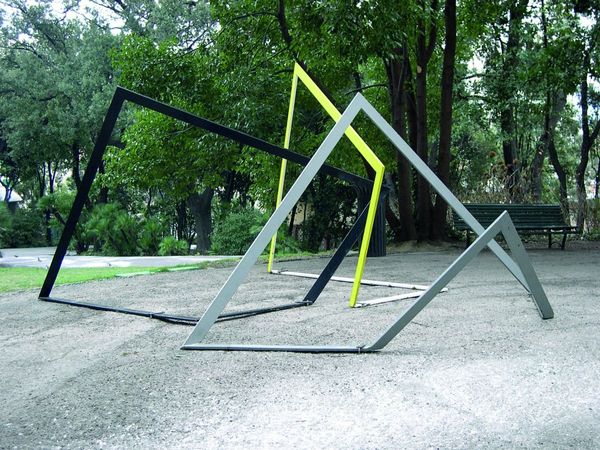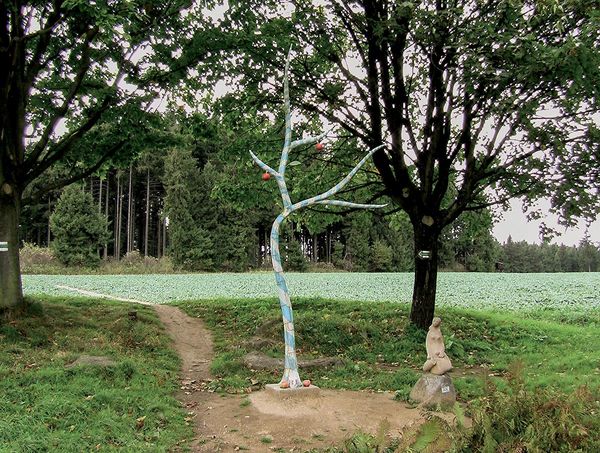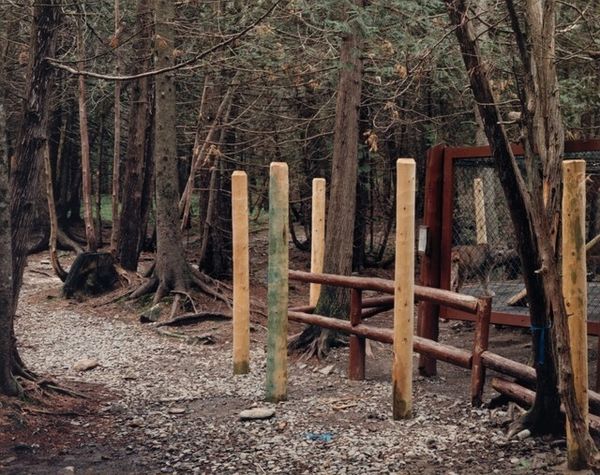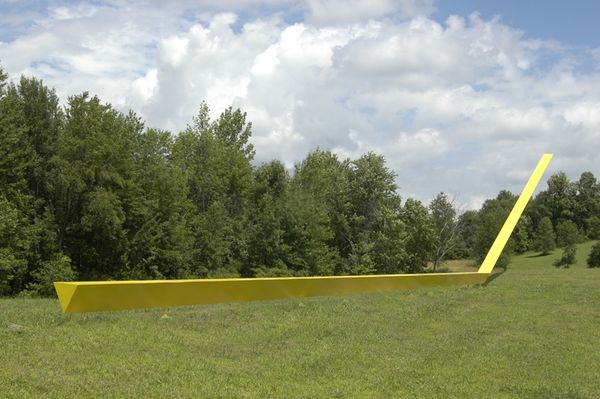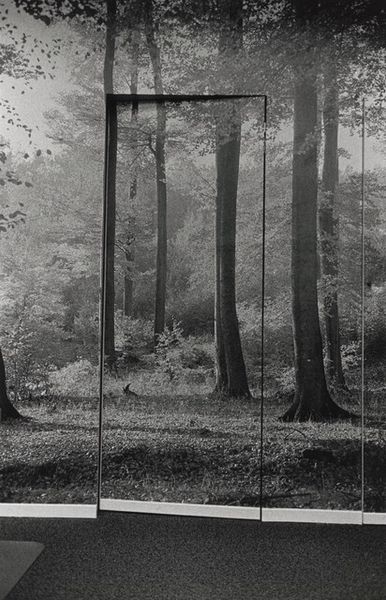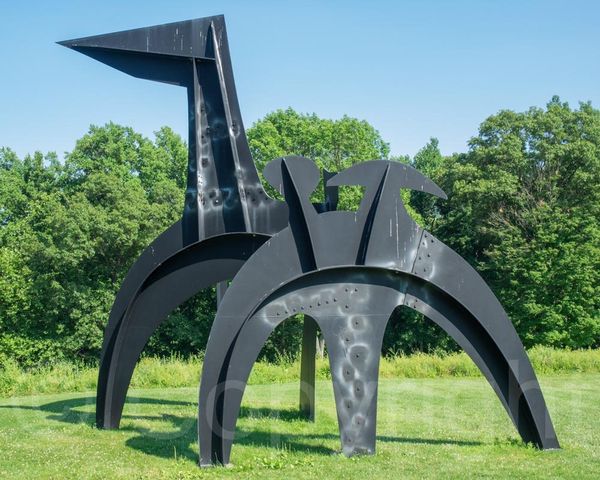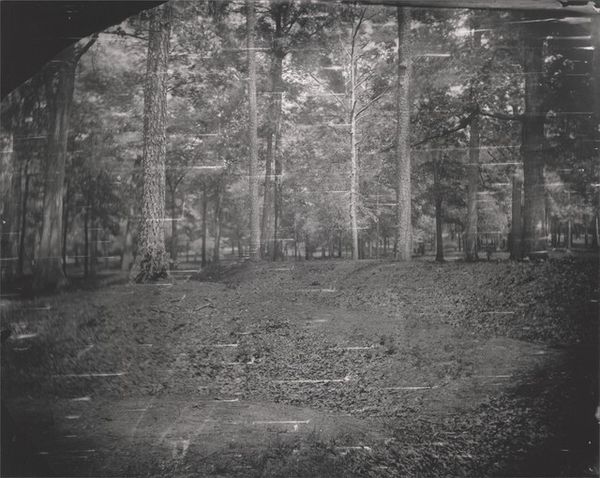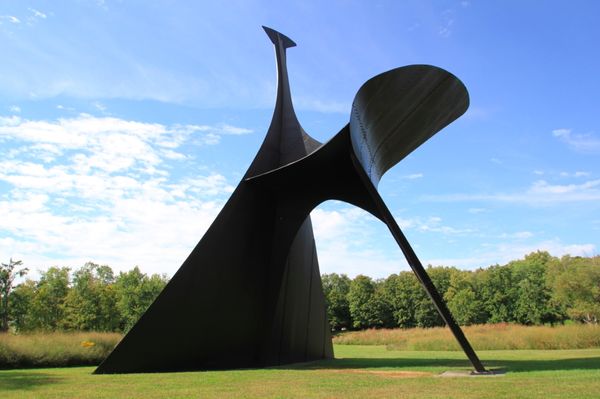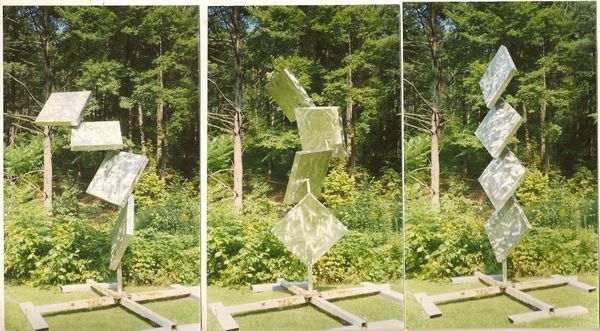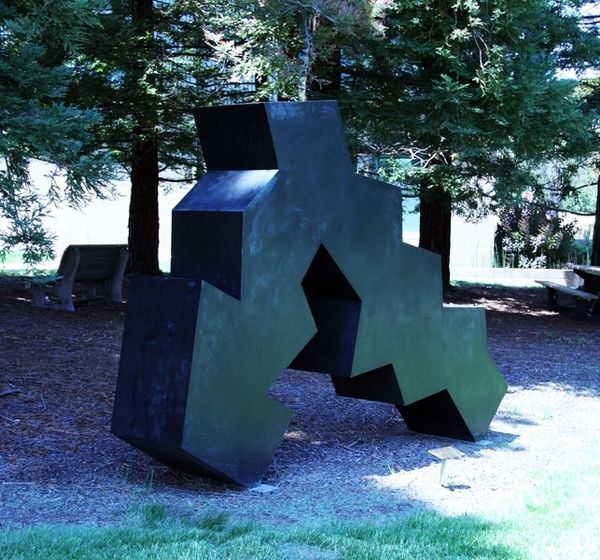
sculpture, site-specific, installation-art
#
minimalism
#
landscape
#
land-art
#
nature
#
environmental-art
#
geometric
#
sculpture
#
concrete
#
site-specific
#
installation-art
Copyright: Francois Morellet,Fair Use
Editor: So this is François Morellet’s *La Plate-Bande*, created in 1988. It seems to be made of concrete, and is placed in the middle of a forest, disrupting the expected view of nature. I'm struck by how this geometric structure alters the viewer’s experience of the landscape. What are your thoughts? Curator: Well, viewing it through a historical lens, it challenges our notions of landscape art. Traditionally, landscapes were paintings *of* nature, carefully framed and curated for consumption within gallery walls. But here, Morellet actively *intervenes* in the landscape, bringing a minimalist sculpture directly into a natural environment. What does the site-specific nature of this work mean in contrast to, say, a landscape painting exhibited inside a museum? Editor: I see your point. The traditional painting presents an idealized version of nature. Here, the geometric form interacts directly with the actual environment, prompting a conversation between the man-made and the natural. Do you think it also reflects society’s increasing role in altering these environments? Curator: Exactly! It embodies our complex relationship with nature. Minimalism emerged amidst growing environmental awareness, and artists used this stark geometric language to point out humanity's reshaping of the earth. Morellet doesn't try to mimic nature but rather imposes a distinctly human structure on it. He's pushing the dialogue forward by questioning the division of landscape *from* art object and implicates art’s institutional framework. Does the shift away from institutional support signal more artists trying to reach audiences beyond the established "art world?" Editor: That's a perspective I hadn't considered. It seems he’s also making the statement that art doesn't necessarily need a museum or gallery; it can exist anywhere. It feels quite subversive, now that you explain the historical setting. Curator: It asks how the environment is viewed and used, challenging gallery conventions and art-market frameworks. It allows for free encounters, thus pushing us to think differently about public engagement. Editor: I never considered the socio-political statement behind geometric structures like this. Thanks for clarifying this perspective; I see now how the artist's intention contributes to my understanding of environmental sculpture!
Comments
No comments
Be the first to comment and join the conversation on the ultimate creative platform.
